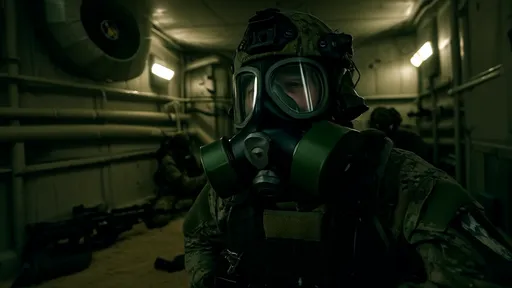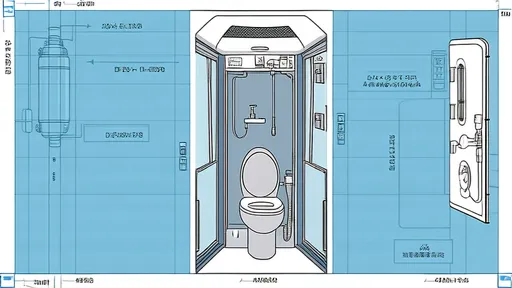As sandstorms become increasingly frequent in many parts of the world, the need for proper indoor air quality management has never been more critical. These storms bring with them a host of airborne particles that can infiltrate homes and workplaces, posing serious health risks. Training individuals on how to maintain clean indoor air during such events is essential for safeguarding health and ensuring comfort.
Sandstorms carry fine particulate matter that can easily penetrate buildings through cracks, windows, and ventilation systems. Once inside, these particles can linger in the air for extended periods, leading to respiratory issues, allergies, and other health complications. Understanding how to mitigate these risks through proper air filtration, sealing, and ventilation is key to creating a safe indoor environment.
The Importance of Air Filtration Systems
One of the most effective ways to combat poor air quality during sandstorms is through the use of high-efficiency particulate air (HEPA) filters. These filters are designed to capture even the smallest particles, ensuring that the air inside remains clean. However, not all filters are created equal, and knowing which ones to use—and how to maintain them—is crucial for optimal performance.
Regular maintenance of air filtration systems is equally important. Clogged or dirty filters can reduce airflow and efficiency, allowing harmful particles to circulate indoors. Training programs should emphasize the importance of timely filter replacements and proper system upkeep to ensure continuous protection.
Sealing and Insulation: Keeping the Outdoors Out
Another critical aspect of indoor air training involves teaching individuals how to properly seal their homes and workplaces. Small gaps around windows, doors, and other entry points can serve as gateways for dust and pollutants. Weatherstripping, caulking, and other sealing techniques can significantly reduce the infiltration of outdoor contaminants.
Insulation also plays a role in maintaining indoor air quality. Well-insulated buildings not only conserve energy but also create a barrier against external pollutants. Training should cover the basics of insulation materials and techniques, helping individuals make informed decisions about their living and working spaces.
Ventilation Strategies for Sandstorm Conditions
While sealing a building is important, proper ventilation is equally necessary to prevent the buildup of indoor pollutants. During sandstorms, however, traditional ventilation methods like opening windows can do more harm than good. Training programs should focus on alternative ventilation strategies, such as using air purifiers with HEPA filters or installing energy recovery ventilators (ERVs) that filter incoming air.
Balancing ventilation and filtration is a delicate task, especially during prolonged sandstorm events. Individuals should be trained to monitor indoor air quality in real-time, using sensors and other tools to make adjustments as needed. This proactive approach ensures that indoor spaces remain healthy even when outdoor conditions are hazardous.
Health Implications and Protective Measures
The health risks associated with poor indoor air quality during sandstorms cannot be overstated. Fine particulate matter can aggravate asthma, trigger allergies, and even lead to more serious conditions like bronchitis or cardiovascular problems. Training should include information on recognizing symptoms of poor air quality exposure and taking appropriate action.
Protective measures such as wearing masks indoors, using humidifiers to reduce dust, and creating clean air zones within homes can make a significant difference. Educating individuals on these practices empowers them to take control of their indoor environments and protect their health.
Community and Workplace Preparedness
Indoor air training shouldn’t be limited to individual households. Workplaces, schools, and community centers must also be prepared to handle sandstorm conditions. Training programs tailored to these settings can help organizations implement air quality protocols, ensuring the safety of employees, students, and visitors.
Community-wide initiatives, such as distributing air quality monitors or organizing workshops on indoor air management, can further enhance preparedness. Collaboration between local governments, health organizations, and residents is essential for building resilience against sandstorm-related air quality issues.
Looking Ahead: The Future of Indoor Air Training
As climate change continues to influence weather patterns, sandstorms may become even more prevalent in regions where they were once rare. Investing in comprehensive indoor air training today can prepare communities for the challenges of tomorrow. By equipping individuals with the knowledge and tools to maintain clean indoor air, we can mitigate the health risks posed by these environmental events.
The journey toward better indoor air quality during sandstorms begins with education. Through targeted training programs, we can create safer, healthier indoor spaces for everyone, no matter what the weather brings.

By /Aug 6, 2025

By /Aug 6, 2025

By /Aug 6, 2025

By /Aug 6, 2025

By /Aug 6, 2025

By /Aug 6, 2025

By /Aug 6, 2025

By /Aug 6, 2025

By /Aug 6, 2025

By /Aug 6, 2025

By /Aug 6, 2025

By /Aug 6, 2025

By /Aug 6, 2025

By /Aug 6, 2025

By /Aug 6, 2025

By /Aug 6, 2025

By /Aug 6, 2025

By /Aug 6, 2025

By /Aug 6, 2025

By /Aug 6, 2025